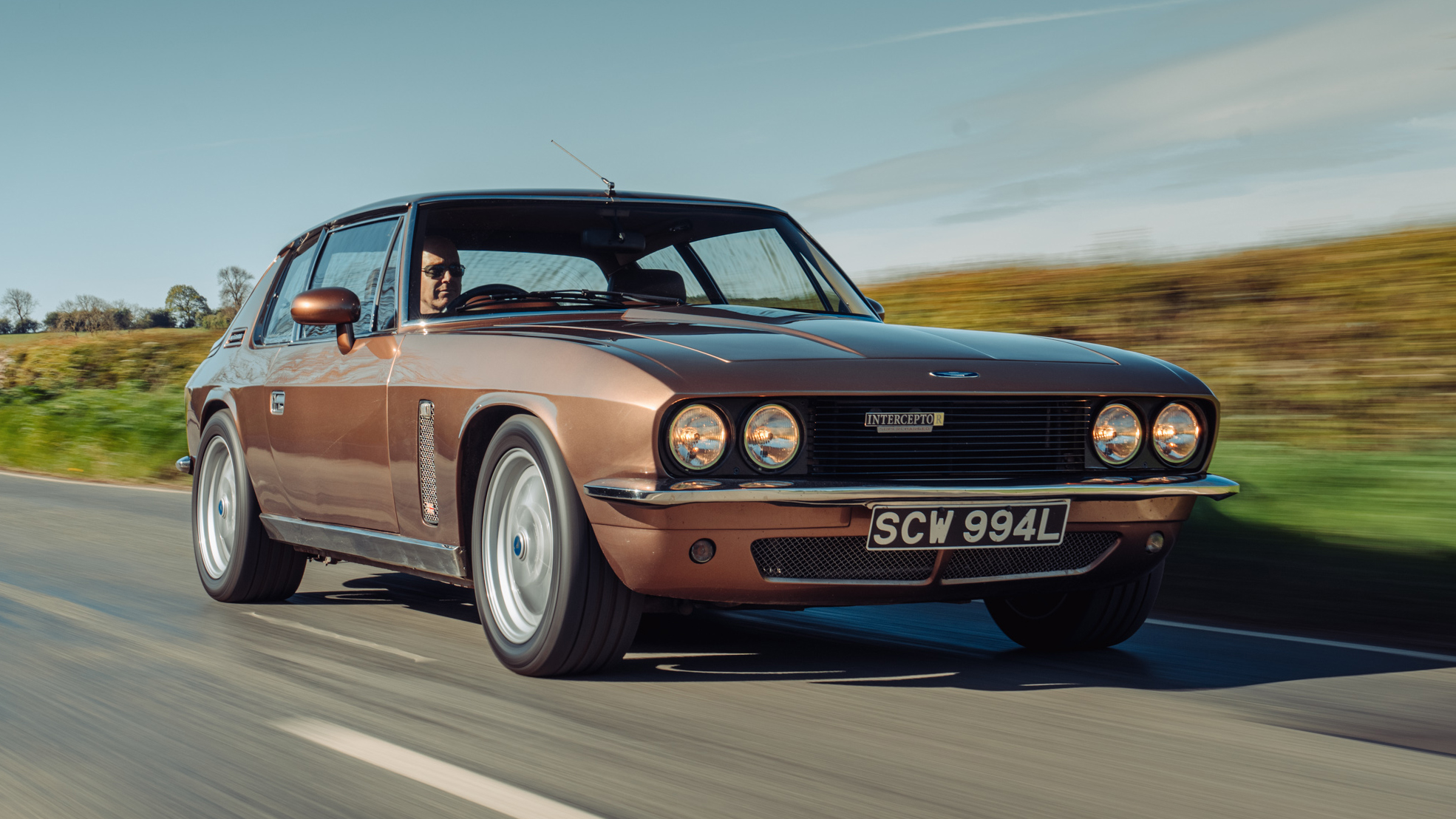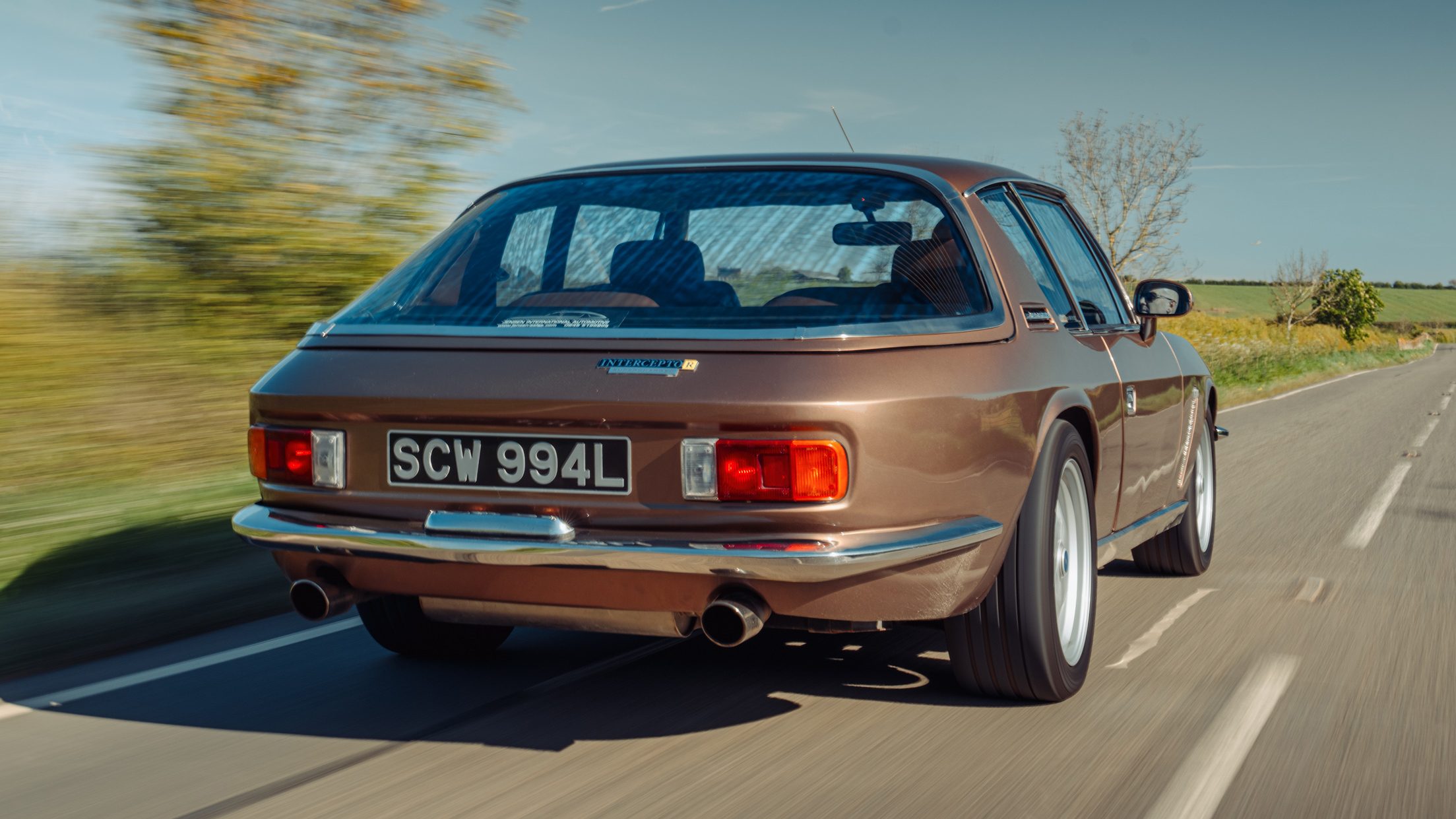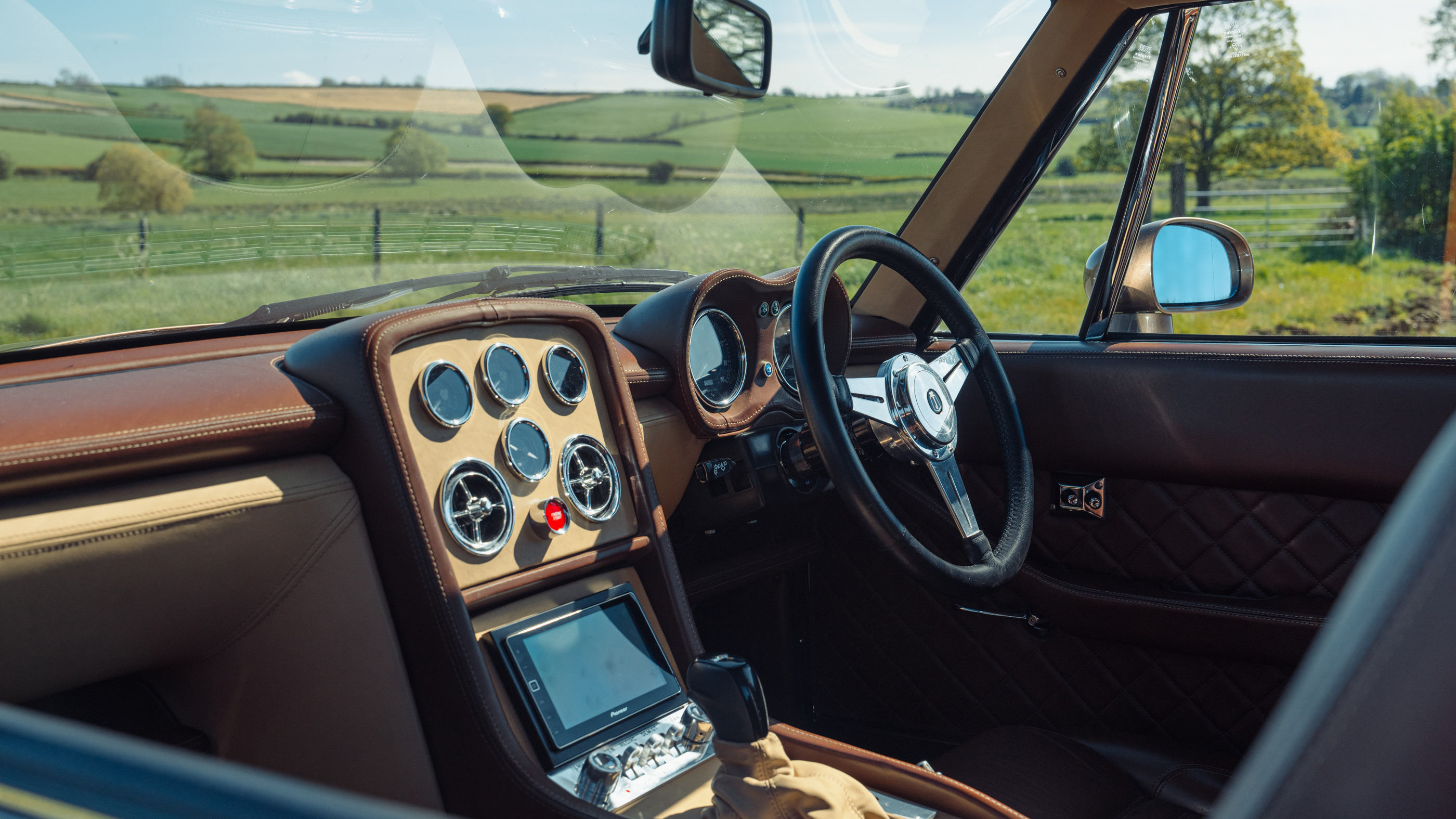
Jensen Interceptor review
Driving
What is it like to drive?
Dangerously addictive. It’s the muscle car thing. What is it about a lazy, big capacity V8 that is so appealing? And at its best at tickover speeds, too. There’s a big red starter button front and centre on the dash. Thumb it and hold until the throbbing V8 catches. The soundtrack is everything, as life-affirming as a heartbeat, as steady as a metronome, it has presence and power without making any fuss. There’s also a good whiff of petrol, suggesting it’s not the most clean burning engine around.
Come on, just how thirsty is it?
Well, despite having twice as much power as an original, the JIA Interceptor is actually quite a bit more economical. They claim 19mpg, and on a long steady cruise, we suspect that is achievable. However across three tanks of mixed driving, we averaged 14.3, 16.0 and 15.3mpg. Expect to be fuelling up every 200–250 miles. Original cars? Reckon on 10-12mpg.
But is this much better to drive than an original?
Emphatically so. The Interceptor may have been designed for high-speed cruising, but in practice it was wayward at speed, the steering getting increasingly light and the car moving around. The changes made to this one have made it as stable and reassuring as most modern cars. Just as well given the power it wields: 556bhp and 551lb ft at 3,800rpm.
Yeah, but I bet it weighs a couple of tonnes?
You’d imagine so given that although Jensen had previously done fibreglass bodied cars, it reverted to steel for the Interceptor. Steel chassis too, and it was a giant in its day, 4,724mm long and 1,753mm wide. Nowadays the Interceptor is merely par for the course, low lying and dwarfed by SUVs – and the same applies to its mass.
We put it on a weighbridge and it was 1,730kg with a full tank of fuel, which is lighter than a fair few electric crossovers we have weighed recently. It also means the JIA car has a power-to-weight ratio of 321bhp/tonne, putting it on par with a new 911 Carrera S. When prodded, it really goes. As the drivers of an Aston V8 Vantage and Lancer Evo VI Makinen can attest.
I bet it rolls more than a puppy on a playdate, doesn’t it?
The adjustable modern dampers have made a big difference here, but as we said in the Overview, this is still a period driving experience, and all the better for it. What’s important is that you’ve got good steering feel and weighting, so you know what’s going on at the front, and how much grip you’ve got left. So yes, there is roll, and no, it doesn’t like pushing around roundabouts too fast, but it can be hustled with more verve than you expect.
The thing to watch out for is the gearbox. Because if you want instant power on tap as you exit a corner, you will need to tap the lever to the right and select gears yourself. Otherwise the six-speeder can be a bit lurchy and late.
Would you be happy doing distance in it?
It may not be the most refined or smooth riding, but there is something about the V8s gentle rumble and low revs that makes miles evaporate. Actually, the ride isn’t too bad, it’s just that impacts come through the suspension and flex the chassis, which in turn shakes the trim. JIA has fitted a bonded windscreen, and sorted the sealing, so wind noise isn’t really an issue.
Featured

Trending this week
- Car Review
BMW 1 Series
- Top Gear's Top 9
Nine dreadful bits of 'homeware' made by carmakers






